

|
How to Reattach Detached Covers
This isn't a pretty sight:
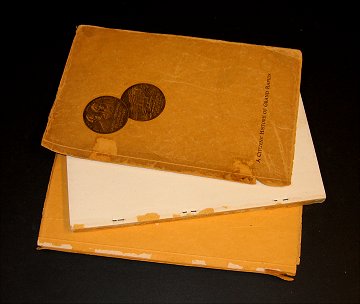
Is this book repairable? Even if it is, it's plain to see that it still won't be a very pretty book once it's made whole again. And yet, sometimes it makes sense to do the repair anyway - not to please the aesthetic sensibilities of the collector but to restore function for the reader. In case you can't make it out, the title of this book is A Citizen's History of Grand Rapids. I sell a lot of this type of book (local histories). Experience teaches me that they are rarely collected for appearance. Far more often they're collected for content. And buyers actually read them. Look at pictures. This is why it might make sense to restore a damaged local history book to a state in which it can function again as a book: you'll get a much better price for it. There's more than one way to get this particular repair done, but I'm going to show you one that's cheap, fast, simple and meets archival criteria. First, you gotta buy a bottle of this:
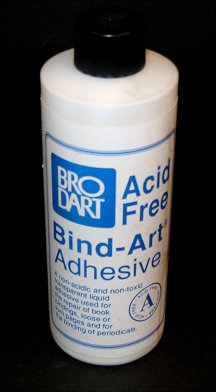
Here's where. At $7.50, the 8-ounce size will break no budget, and it'll last you years. Bind-Art adhesive is otherwise known as polyvinyl acetate (PVA). It begins life as a runny, white liquid in a bottle - admittedly, not the sort of thing that inspires confidence in yours truly, who used Gorilla Glue for years to bond wood members - but it sure does know close things out: PVA dries transparent, forms a strong, permanent bond, and remains flexible indefinitely. The latter quality is very important for books that are handled frequently. For fussy booksellers, it's also acid free. Ok, we're in 3 pieces here - back cover, front cover and text block - so this is best accomplished in two steps. The first step is to apply glue to the back cover, which also has the backstrip still attached. Note that this cover is seamed at about 1/4" in from the fore edge, and the covers open along the seam, not at the fore edge. Glue is applied, therefore, to both the backstrip and the 1/4" cover strip. Recommendation: use a high quality brush. They're more accurate. (And PVA cleans up with water.)
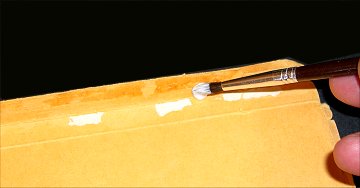
When wet. the glue is sticky enough to more or less hold the joined pieces in place, so clamping isn't necessary. Simply shove the assembly against a wall where it meets a countertop, weight it with some books, and let it dry for an hour or so. In cases where clamping is necessary, I've often been successful using wax paper (to cover areas where glue might ooze out) and Scotch Magic Tape taped to the front and back covers to pull things tight. Magic Tape is peculiarly suited to this because it's more readily removed from paper covers without damaging them than conventional Scotch Tape is. It's also acid free. The next step is to apply glue to the 1/4" strip on the front cover, line it up along the edge of the text block, and clamp:
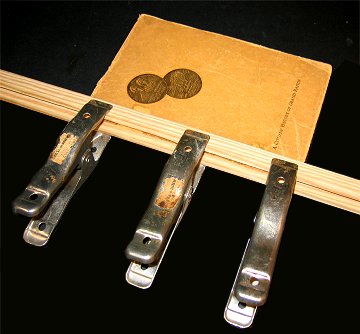
You could repeat the same "clamping" technique that was used for the back cover (forego clamping, that is), but since the backstrip is missing, it would be difficult to get a perfect alignment. In cases where there's no cover strip to apply glue to, it's possible to apply a narrow bead of glue on the very edge of the text block by carefully dipping it in a bead of glue that's applied to the surface of a counter. Even though much less surface area is involved, this is still a remarkably sound repair. Here's the final result:
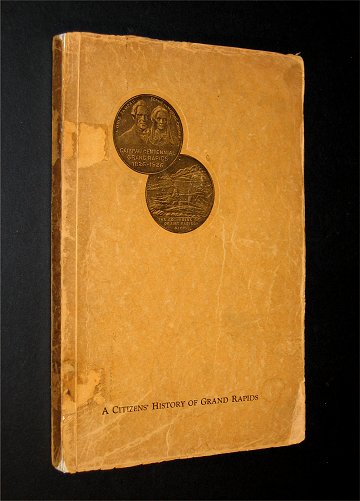
Yeah, it's still an ugly book, but now it's fully functional and, best of all, probably $20 more valuable.
< to previous article
Questions or comments?
| Forum
| Store
| Publications
| BookLinks
| BookSearch
| BookTopics
| Archives
| Advertise
| AboutUs
| ContactUs
| Search Site
| Site Map
| Google Site Map
Store - Specials
| BookHunt
| BookShelf
| Gold Edition & BookThink's Quarterly Market Report
| DomainsForSale
| BookThinker newsletter - free
Copyright 2003-2011 by BookThink LLC
|

|